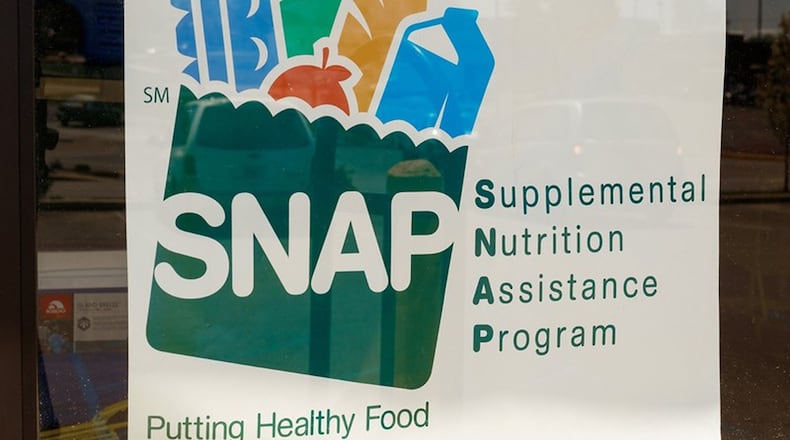After a brief uptick in 2022, the number of Georgians receiving food stamps has dropped by nearly 11% since this time last year.
And fewer Georgians are receiving welfare benefits this year than last, a downward trend that’s existed for more than a decade as government officials seek to reduce the rolls.
After two years of increasing prices, inflation has begun to ease across the country with decreases in expenses such as gas, groceries and used cars, according to an NBC News tracker. That may have caused families to move off of the Supplemental Nutrition Assistance Program, the formal name of the food stamps program.
In June 2022, there were 778,000 Georgia households receiving food stamps. In June of this year, that number dropped to about 694,000 households.
Food stamp enrollment reached a pandemic peak of 905,000 households in September 2020 and has yo-yoed since then, according to Division of Family and Children Services data provided to The Atlanta Journal-Constitution. DFCS administers the state’s federally funded food stamp and welfare programs.
For the 2023 fiscal year that ended June 30, enrollment had a peak of about 801,000 households in July 2022 and fell to about 688,000 households in May 2023.
Food stamp enrollment is often seasonal. Sometimes families need more help with groceries during the summer months when children are at home from school, where they receive free or reduced-price meals paid for by the federal government. Enrollment also typically decreases annually in December, which officials say is caused by lags when recipients are reapplying for the benefit at the end of each year.
The state’s food stamp rolls shrunk after “work requirements” were reinstated in several Georgia counties in 2016 with plans to go statewide in April 2020.
The federal work rules required able-bodied adults without dependents between the ages of 18 and 49 to work at least 20 hours a week or be engaged in some sort of education or work training. They were given three months to find a job or training program before losing their benefits.
About 600,000 fewer people received food stamps in 2019 than in 2013.
Work requirements were abandoned once the coronavirus pandemic began, but were put back in place as of July 1.
State officials and advocates, meanwhile, say there could be a number of reasons for the decrease in the Temporary Assistance for Needy Families program, commonly known as welfare. The decline of more than 1,100 households in the past year follows a long trend of fewer people receiving public cash benefits.
The criteria to qualify for TANF are more strict than for food stamps. The agency doesn’t track why welfare recipients leave the rolls. Recipients have to qualify annually and they don’t conduct exit interviews to learn why recipients choose not to seek renewal, DFCS officials have said.
In June 2022, welfare benefits were granted to 6,190 Georgia households, according to DFCS data. By June 2023, that number was down to 4,809 — an about 21% drop.
That’s a decrease of nearly 86% since 2006, the earliest year for which DFCS could provide data, when 33,302 households received welfare benefits.
To be eligible for welfare in Georgia, a family of three must have a gross income below $784 a month. That same family could have a monthly gross income of up to $2,311 and still qualify for food stamps.
Since Congress passed sweeping changes to the federal welfare program in 1996, the number of households receiving benefits has consistently dropped in Georgia and across the country. Changes implemented in the ‘90s gave states more control over how to run welfare, which has long been politically stigmatized.
In Georgia, state officials require welfare recipients to work or participate in training for at least 30 hours each week. Those who sign up get access to job-searching assistance, or, if necessary, they receive help finishing high school, completing a GED program or finding another specialized certification program.
Some Georgians who begin to sign up for welfare opt not to once they learn about the work requirement, resulting in fewer households receiving benefits. And fewer Georgians are unemployed these days.
Georgia’s unemployment rate dropped to a historically low 3.2% in July from 12.5% in April 2020 — the highest point during the pandemic.
About the Author
Keep Reading
The Latest
Featured




